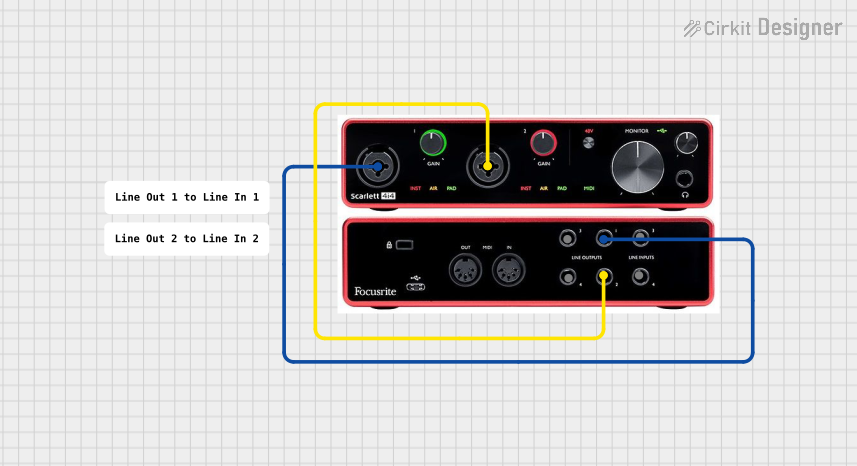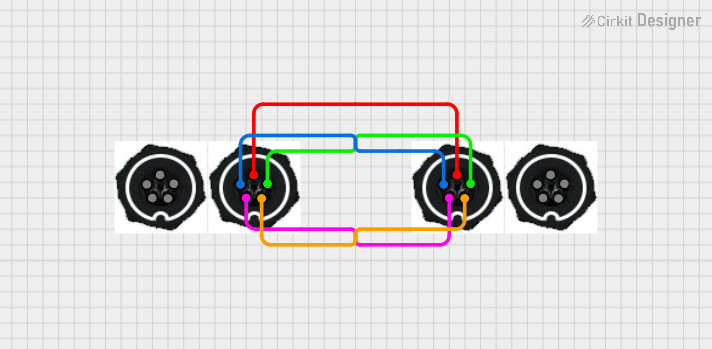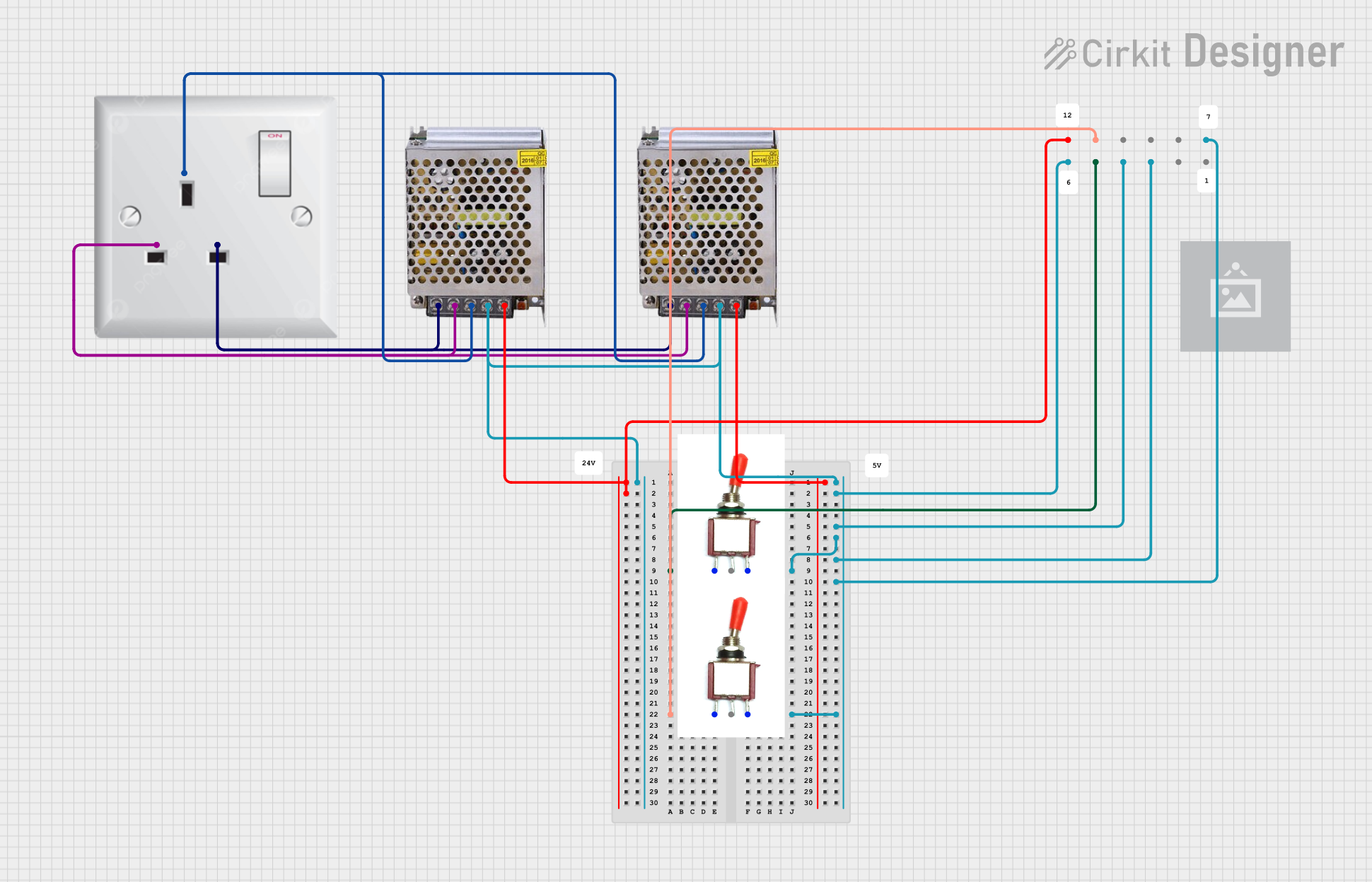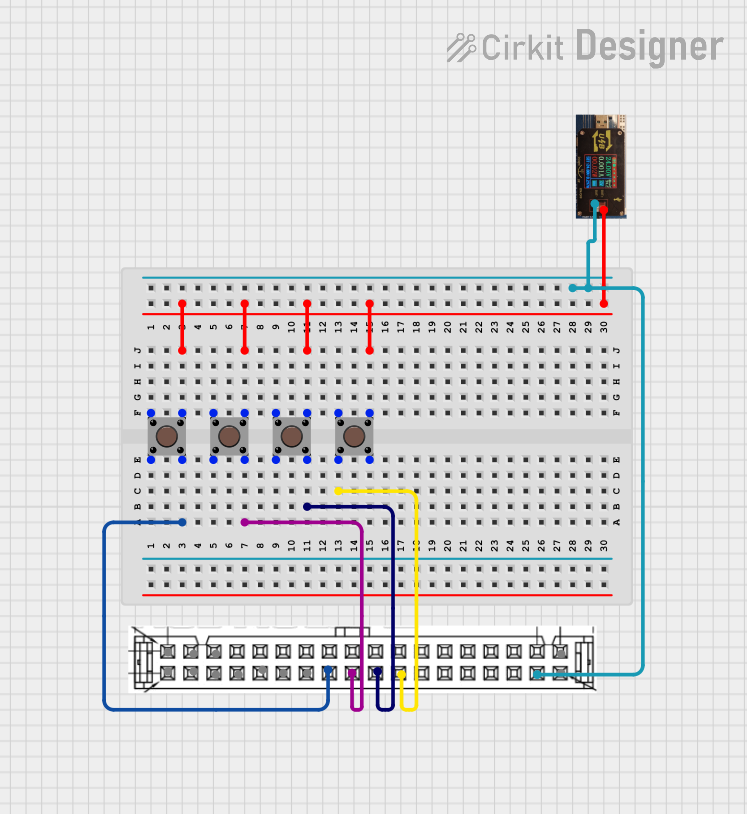
How to Use Connector 2 In 2 Out: Examples, Pinouts, and Specs

 Design with Connector 2 In 2 Out in Cirkit Designer
Design with Connector 2 In 2 Out in Cirkit DesignerIntroduction
The Connector 2 In 2 Out is a versatile electronic component designed to route two input signals to two separate output paths. This component is commonly used in circuits where signal distribution or splitting is required. It provides a simple and reliable way to manage multiple signal paths without the need for complex circuitry.
Explore Projects Built with Connector 2 In 2 Out

 Open Project in Cirkit Designer
Open Project in Cirkit Designer
 Open Project in Cirkit Designer
Open Project in Cirkit Designer
 Open Project in Cirkit Designer
Open Project in Cirkit Designer
 Open Project in Cirkit Designer
Open Project in Cirkit DesignerExplore Projects Built with Connector 2 In 2 Out

 Open Project in Cirkit Designer
Open Project in Cirkit Designer
 Open Project in Cirkit Designer
Open Project in Cirkit Designer
 Open Project in Cirkit Designer
Open Project in Cirkit Designer
 Open Project in Cirkit Designer
Open Project in Cirkit DesignerCommon Applications and Use Cases
- Signal splitting in audio or data transmission systems
- Routing signals in testing and prototyping environments
- Distributing power or control signals in multi-device setups
- Simplifying wiring in modular electronic systems
Technical Specifications
The Connector 2 In 2 Out is a passive component with no active electronic parts. Below are its key technical details:
| Parameter | Value |
|---|---|
| Maximum Voltage | 30V DC |
| Maximum Current | 2A |
| Contact Resistance | ≤ 50 mΩ |
| Insulation Resistance | ≥ 100 MΩ |
| Operating Temperature | -20°C to +70°C |
| Connector Type | Screw terminal or pin header |
| Dimensions | 25mm x 15mm x 10mm |
Pin Configuration and Descriptions
The Connector 2 In 2 Out typically has four terminals or pins. The table below describes the pin configuration:
| Pin | Label | Description |
|---|---|---|
| 1 | IN1 | First input signal terminal |
| 2 | IN2 | Second input signal terminal |
| 3 | OUT1 | Output terminal corresponding to IN1 |
| 4 | OUT2 | Output terminal corresponding to IN2 |
Usage Instructions
How to Use the Connector 2 In 2 Out in a Circuit
- Identify the Terminals: Locate the IN1, IN2, OUT1, and OUT2 terminals on the connector.
- Connect Input Signals: Attach the input signals to the IN1 and IN2 terminals. Ensure the polarity and signal type match the circuit requirements.
- Connect Output Paths: Connect the desired output paths to the OUT1 and OUT2 terminals.
- Secure Connections: If using a screw terminal version, tighten the screws to secure the wires. For pin headers, ensure proper soldering or use compatible connectors.
- Test the Circuit: Power on the circuit and verify that the input signals are correctly routed to the output paths.
Important Considerations and Best Practices
- Signal Compatibility: Ensure the input signals do not exceed the maximum voltage and current ratings of the connector.
- Avoid Short Circuits: Double-check all connections to prevent accidental short circuits.
- Environmental Conditions: Use the connector within the specified operating temperature range to avoid damage.
- Mechanical Stress: Avoid applying excessive force to the connector to maintain its integrity.
Example: Using the Connector with an Arduino UNO
The Connector 2 In 2 Out can be used to route signals from an Arduino UNO to multiple devices. Below is an example of how to use it to distribute a PWM signal:
Circuit Setup
- Connect the Arduino UNO's PWM pin (e.g., pin 9) to the IN1 terminal of the connector.
- Connect the OUT1 terminal to the input of Device A.
- Connect the OUT2 terminal to the input of Device B.
- Ensure all ground connections are common between the Arduino and the devices.
Example Code
// Example code to generate a PWM signal on pin 9 of Arduino UNO
// This signal will be routed through the Connector 2 In 2 Out
void setup() {
pinMode(9, OUTPUT); // Set pin 9 as an output
}
void loop() {
analogWrite(9, 128); // Generate a 50% duty cycle PWM signal
delay(1000); // Wait for 1 second
analogWrite(9, 255); // Generate a 100% duty cycle PWM signal
delay(1000); // Wait for 1 second
}
Troubleshooting and FAQs
Common Issues and Solutions
No Signal at Output Terminals
- Cause: Loose or incorrect connections.
- Solution: Verify that all wires are securely connected to the correct terminals.
Signal Distortion
- Cause: Exceeding the voltage or current rating of the connector.
- Solution: Ensure the input signals are within the specified limits.
Overheating
- Cause: High current flow or poor ventilation.
- Solution: Reduce the current or improve airflow around the connector.
Intermittent Connections
- Cause: Worn or damaged terminals.
- Solution: Inspect the connector for damage and replace if necessary.
FAQs
Q: Can this connector be used for AC signals?
A: Yes, the Connector 2 In 2 Out can handle low-frequency AC signals, provided they are within the voltage and current ratings.
Q: Is this connector suitable for high-speed data signals?
A: This connector is not optimized for high-speed data signals due to potential signal degradation. Use a specialized connector for such applications.
Q: Can I use this connector to split power signals?
A: Yes, it can be used to distribute power signals, but ensure the total current does not exceed 2A.
Q: How do I clean the connector?
A: Use a soft brush or compressed air to remove dust. Avoid using liquids that may damage the insulation.